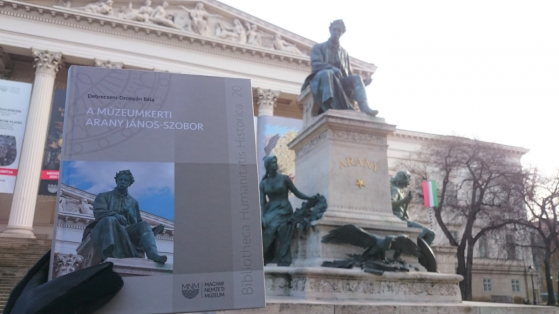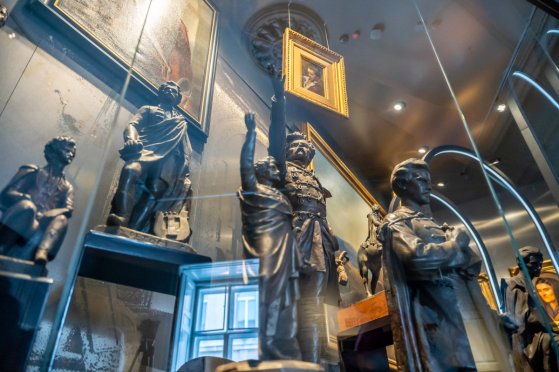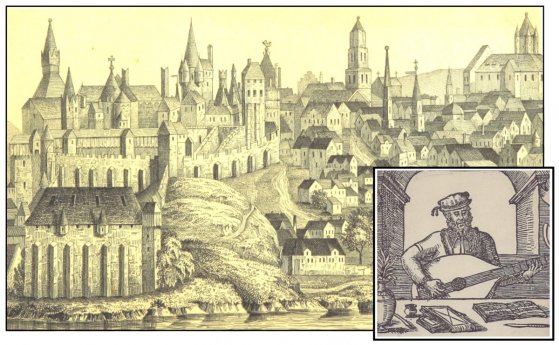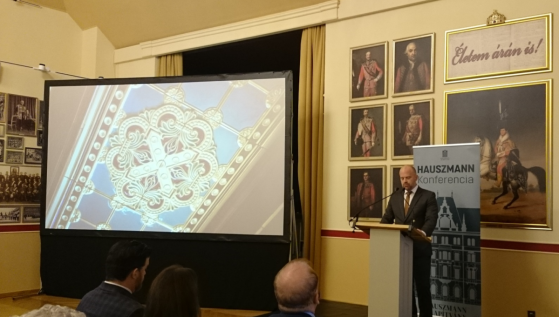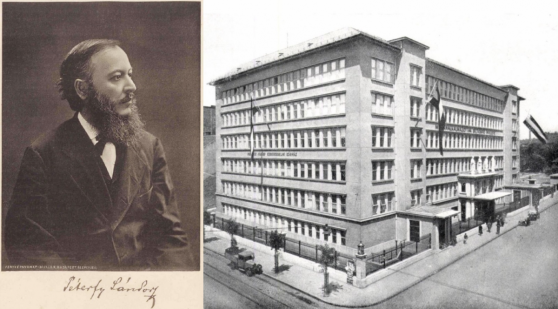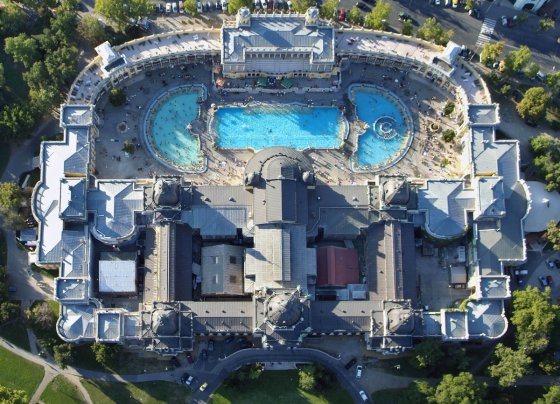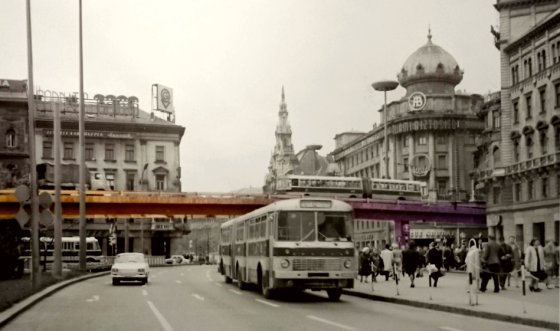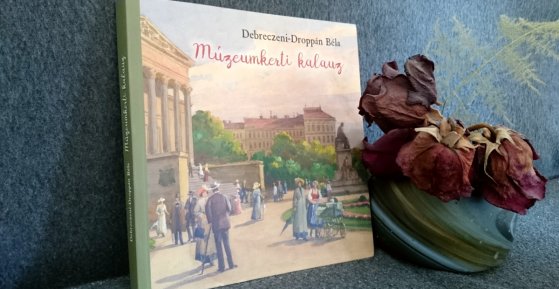 The „intertwined history” of the bridges and the city of Budapest
Which ideas and events have shaped the fate of bridges of Budapest and the cityscape? Alongside many other interesting facts, this question is also answered this newly published book by the Budapest City Archives, which introduces the history of bridges in Budapest.
The „intertwined history” of the bridges and the city of Budapest
Which ideas and events have shaped the fate of bridges of Budapest and the cityscape? Alongside many other interesting facts, this question is also answered this newly published book by the Budapest City Archives, which introduces the history of bridges in Budapest.
Dávid Mészáros
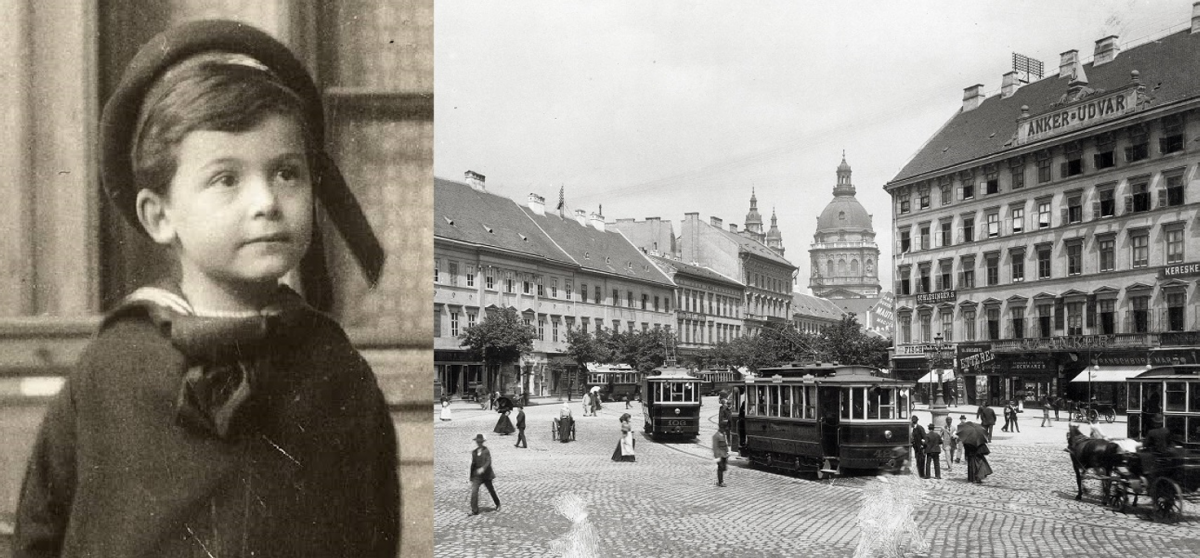 One of the sharpest-minded Hungarians - The Budapest life of the young János Neumann
One of the sharpest-minded Hungarians - The Budapest life of the young János Neumann
February 8, 2023 at 12:30 PM
The world considers him mostly a mathematician, but János Neumann was a great polymath of the 20th century. His achievements affect several scientific fields. He left Budapest when he was young, but his entire childhood was tied here: his excellent education and the years he spent in one of the best Hungarian secondary schools helped develop his brilliant mind. On 8 February, the 66th anniversary of his death, on the occasion of the Neumann Memorial Year announced for 2023, Pestbuda toured the main stations and locations of his life in the capital to recall his mind and personality.
The meeting of a unique sculptor and the cult of Arany - Description of a period with the help of a 130-year-old famous monument in Pest
January 31, 2023 at 9:00 AM
130 years ago the first public statue of János Arany was inaugurated in front of the main entrance of the Hungarian National Museum. In a new book that has just been published, not only is the entire history of the monument and the adventurous life of its creator, Alajos Stróbl, revealed to the readers, but they can also see how the people of the 19th century thought and debated, what they considered beautiful and right, what they were different from or just similar to people now. The book, which is also rich in images, is both a colourful introduction and an exciting description of a period.
The new Petőfi exhibition opened at the PIM addresses the 21st-century people
January 14, 2023 at 2:30 PM
In honour of Petőfi, who was born 200 years ago, a new, large-scale permanent exhibition opened today, 14 January, at the Petőfi Literary Museum (PIM). The institution's undisclosed goal was to bring the poet's work closer to the people of the 21st century, to our everyday lives: the importance of home, the importance of friends or the sacrifice made for our loved ones are all topics that we can easily identify with. Artefacts, special scenery and multimedia tools also help us to get familiar with the work of the poet. Topics that are still relevant today, in Petőfi's interpretation.
A world star raised in Buda in the Middle Ages - memories of Bálint Bakfark and the street named after him
December 12, 2022 at 9:00 AM
In the heyday of the Renaissance, a lute artist educated in Buda went on a European tour to impress the rulers and noble courts of the continent with his brilliant music, even generating sympathy for the cause of the Kingdom of Hungary, which was languishing under the threat of the Ottoman Empire. As a student, Bálint Bakfark was able to see Buda just before the long Turkish occupation. His memory is preserved today by a small street, next to which the medieval city wall stretched.
In the footsteps of Endre Thék, Miksa Róth, and Gyula Jungfer - Turn-of-the-century fine art and crafts will be taught again
November 26, 2022 at 1:00 PM
In Budapest, several of the previously destroyed buildings of historical importance have been recreated in recent years, but due to the lack of skilled craftsmen, the implementation was a huge challenge. The reconstructions currently underway and planned in the future will be helped by the fact that starting next year, a training course will be launched in which these crafts, which also require artistic talent, can be mastered at a high level - it was announced at the Hauszmann Foundation's conference in Buda Castle on Thursday.
From the Father of teachers to the hospital of the revolution - Sights of Péterfy Sándor Street
November 4, 2022 at 9:00 AM
Péterfy Sándor Street is one of the characteristic streets of Külső-Erzsébetváros, the so-called Csikágó [Chicago, written as it is pronounced in Hungarian] quarter. It owes its fame mostly to its hospital and the events that took place there in 1956, but its namesake, the Hungarian "Father of teachers", also lived here. Its characteristic streetscape consists of residential buildings with circular corridors built during the Dualism, but it is also in contact with the country's first official kindergarten teacher training institute, a former brewery warehouse and a former market square. Take a look at what this street is all about.
Baths from above - As seen by the birds
July 24, 2022 at 1:00 PM
In the raging summer, many people cool off in Budapest's well-known spas, which are not only attractive because of their healing effects and mineral-rich waters, but most of them are also tourist attractions and represent an inestimable value within our architectural heritage. Many people know these masterpieces inside and out, but perhaps few have seen them from above. From this special point of view, the surroundings of the baths can be seen in aerial photos.
This could have been Budapest - New exhibition opened about the unrealised plans of the capital
June 21, 2022 at 7:00 PM
Everyone is equally interested in creating and maintaining good transportation. Many concepts have come to light in the nearly 150 years of Budapest, which wanted to help or add colour to our transport options: should there be a cable car that leads up to Gellért Hill? Should there be a footbridge on the Danube somewhere? Should the Hungária Ring Road be two-story? The exhibition, which opened on 21 June at the new location of the Museum of Transport, the Northern Maintenance Depot, will undertake to present the transport development visions that have not been realised but have been successfully reached the design table.
Colourful memento about a brilliant architect - The Postal Palace became the main work of Gyula Sándy
May 8, 2022 at 12:00 PM
Finding and viewing pieces of the architectural heritage of a city with a long history is an eternal tourist hit. Budapest stands out in this area mostly with the legacy of dualism and the two world wars: almost everyone have encountered the names of Miklós Ybl, Imre Steindl or Ödön Lechner, but if we dig deeper, it is impossible to list how many undeservedly lesser-known talents contributed to the decoration of the Hungarian capital. The building of the Buda Postal Palace, which adorns the south-western side of Széll Kálmán Square, is also connected to such a genius: a remarkable volume came out this year about Gyula Sándy's life and work, both from a professional and a layman's point of view.
The garden of revolution and love - A Museum Garden Guide from a new angle
April 24, 2022 at 7:00 PM
One of the most charming open-air venues in the city centre is the Museum Garden, which once again shines in its full splendour: looking at its sculptures and memorial plaques, or relaxing on one of the museum’s steps and benches, can reminds us of the rich past of this special historical site. This extraordinary richness is illustrated by a gap-filling publication, the Museum Garden Guide, which - worthy of its title - guides us through the garden, recalling the events of the past, with many surprises in store for the reader.
More articles
 The „intertwined history” of the bridges and the city of Budapest
Which ideas and events have shaped the fate of bridges of Budapest and the cityscape? Alongside many other interesting facts, this question is also answered this newly published book by the Budapest City Archives, which introduces the history of bridges in Budapest.
The „intertwined history” of the bridges and the city of Budapest
Which ideas and events have shaped the fate of bridges of Budapest and the cityscape? Alongside many other interesting facts, this question is also answered this newly published book by the Budapest City Archives, which introduces the history of bridges in Budapest.
 The Bridge Report, which brought a turning point in the history of Budapest
A travel report that changed the history of Pest and Buda, as well as Hungary. The little book contributed to the change of half a thousand years of legal customs and the implementation of an investment of unprecedented size and technical quality. This book was The Bridge Report [Hídjelentés in Hungarian].
The Bridge Report, which brought a turning point in the history of Budapest
A travel report that changed the history of Pest and Buda, as well as Hungary. The little book contributed to the change of half a thousand years of legal customs and the implementation of an investment of unprecedented size and technical quality. This book was The Bridge Report [Hídjelentés in Hungarian].
 Drama on the university wall - The heroic monument was planned 95 years ago
In the constant hustle and bustle of the Egyetem Square in Pest, the students may not even notice the monument that decorates the short section of wall between the church and the central building of ELTE. However, it commemorates their predecessors, the heroes who fought for their country in World War I, and those who heroically helped them. The first design of the dramatically collapsing soldier was born in 1928, ninety-five years ago.
Drama on the university wall - The heroic monument was planned 95 years ago
In the constant hustle and bustle of the Egyetem Square in Pest, the students may not even notice the monument that decorates the short section of wall between the church and the central building of ELTE. However, it commemorates their predecessors, the heroes who fought for their country in World War I, and those who heroically helped them. The first design of the dramatically collapsing soldier was born in 1928, ninety-five years ago.

